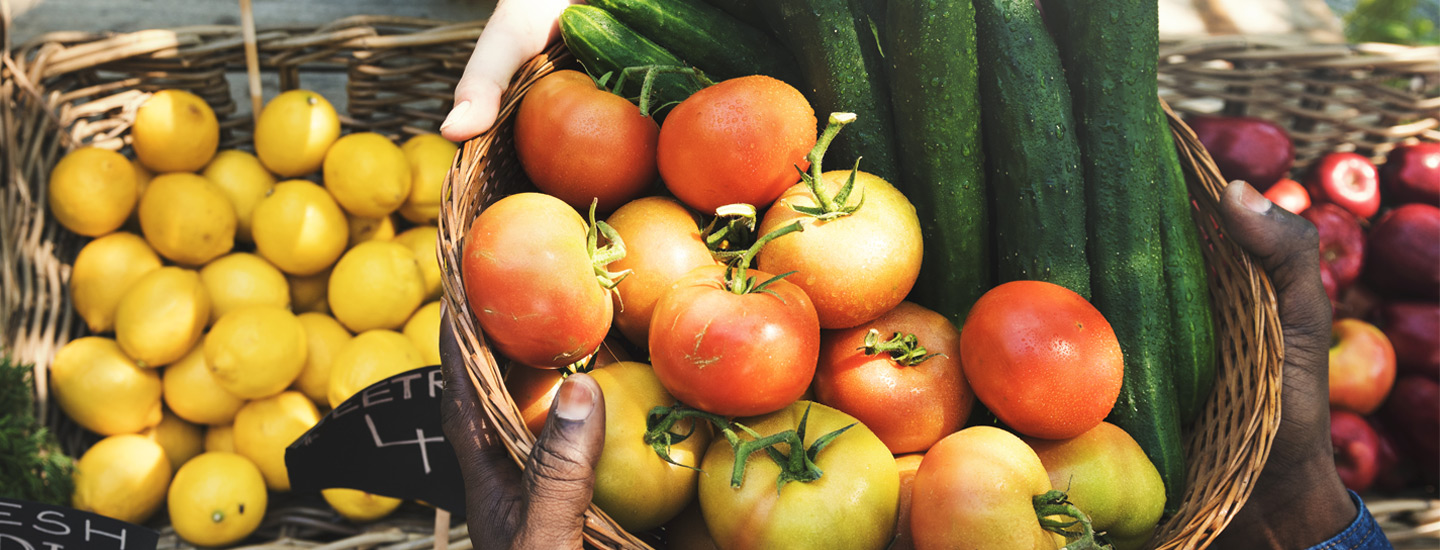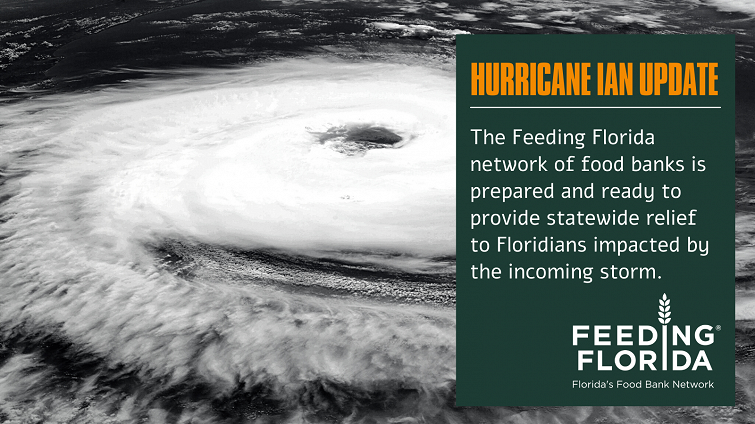Network of statewide food banks poised and ready to provide emergency relief, staging MREs and water in partnership with the State of Florida
[Tallahassee, Fla.] – The Feeding Florida network of food banks is prepared to provide statewide relief to Floridians impacted by Hurricane Ian. In partnership with the Department of Emergency Management’s ESF6 mass feeding team, Feeding Florida and its 12-member food banks have proven they can quicky mobilize to ensure communities are prepared and provided for.
“We believe our response and recovery efforts are critical to helping impacted Floridians during times of need, including disasters,” said Robin Safley, Executive Director of Feeding Florida. “Our partnership with the Division of Emergency Management, our federal partner agencies, and our network of 12 Feeding America food banks will work toward ensuring that no Floridian is left without aid.”
Feeding Florida is the state’s largest hunger relief organization and the only food bank network with an active presence, providing ongoing community-based food distribution in all 67 counties of Florida. Their efforts are critical during times of crisis and natural disaster.
Feeding Florida’s year-round efforts to plan natural disaster response and recovery efforts includes staged water and MREs in strategic locations statewide, regular briefings with state Emergency Management teams and food bank emergency personnel, and pre-planned re-allocation of our own assets to allow food banks statewide to react immediately and assist Floridians in affected areas.
With Hurricane Ian anticipated to make landfall later this week, Feeding Florida reminds individuals they should visit www.FloridaDisaster.org to make a plan and identify local emergency services.
“We are constantly assessing community needs and organizing our assets so we can offer assistance and basic supplies such as food, water, hygiene and paper products to those who might be affected,” said Safley. “Whether there are grey skies or blue skies, the Feeding Florida network is prepared to provide aid and make sure the needs of all Floridians are met.”
To learn more about the Feeding Florida food banks and the network’s disaster response efforts, please visit https://www.feedingflorida.org/taking-action/disaster-response.
# # #
About Feeding Florida
Feeding Florida is the state’s leading organization in the fight to end hunger. The statewide network unites 12-member food banks to provide a healthy, adequate, and consistent food supply to every community every day. Feeding Florida member food banks support the state’s 67 counites with more than 2,400 local charitable agencies, which provide food directly to individuals and families in need to ensure a hunger-free Florida. Feeding Florida’s member food banks include: All Faiths Food Bank, Second Harvest of the Big Bend, Bread of the Mighty, Feeding Northeast Florida, Feeding South Florida, Feeding Tampa Bay, Feeding the Gulf Coast, First Step Food Bank, Florida Gateway Food Bank, Harry Chapin Food Bank of Southwest Florida, Second Harvest Food Bank of Central Florida, and Treasure Coast Food Bank.


